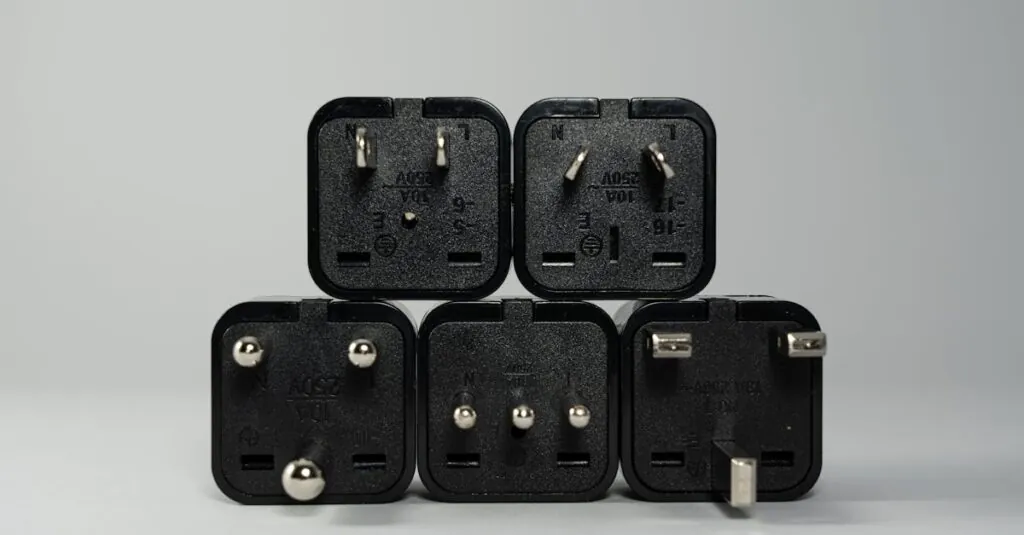Understanding LH surge detection can feel like trying to find a needle in a haystack—one that’s also moving. But fear not! This little hormonal spike is the key to unlocking the mysteries of ovulation and fertility. Just think of it as your body’s way of sending out a “Let’s get this party started” invitation.
Understanding LH Surge Detection
LH surge detection plays a vital role in tracking ovulation and supporting fertility awareness. Detecting this hormone surge enables individuals to determine the optimal time for conception. Various methods exist for identifying the LH surge, including urine tests and blood tests, with each method offering distinct advantages.
Urine tests provide a convenient at-home option. These tests analyze urine samples for elevated LH levels, signaling the onset of ovulation. Such tests typically become available during the days leading up to ovulation to enhance detection accuracy.
Blood tests offer a more precise method but require clinical assistance. Healthcare professionals conduct these tests to measure LH levels, providing a detailed view of hormonal fluctuations. Timing for blood tests often aligns with specific phases of the menstrual cycle for optimal results.
Understanding the LH surge involves recognizing the significance of precise timing in relation to ovulation. A surge usually occurs 24 to 48 hours prior to ovulation, making accurate detection crucial for those aiming to conceive. With many individuals relying on technology, fertility apps can also assist in tracking LH levels and predicting ovulation days.
Consistent monitoring of LH levels aids in identifying patterns within menstrual cycles. Gathering data across cycles enhances prediction accuracy for future ovulation, benefiting those trying to conceive. Ultimately, mastering LH surge detection empowers individuals with knowledge and confidence in their reproductive health.
Importance of LH Surge Detection
Detecting the LH surge plays a crucial role in understanding ovulation and supporting fertility. This hormonal spike signals the body to prepare for ovulation, making timely detection essential for those aiming to conceive.
Role in Ovulation Prediction
LH surge detection is integral for predicting ovulation. It typically occurs 24 to 48 hours before the actual ovulation event. Identifying this peak in LH levels allows individuals to time intercourse accurately, increasing the likelihood of conception. Various methods exist for detection, including urine testing, which provides a convenient at-home solution, and blood testing, known for offering precise results. Utilizing these methods promptly can significantly enhance ovulation prediction and overall fertility success.
Impact on Fertility Awareness
Fertility awareness directly benefits from monitoring LH levels. By recognizing the LH surge, individuals gain insight into their menstrual cycles, empowering them to make informed decisions regarding reproduction. Tracking patterns in LH fluctuations enhances understanding of one’s fertility window and aids in planning. Additionally, many fertility apps incorporate LH surge detection, assisting users in predicting ovulation days conveniently. This awareness fosters confidence in reproductive health and supports individuals in their family planning efforts.
Methods of LH Surge Detection
LH surge detection methods are integral for understanding ovulation timing and enhancing fertility awareness. Various options cater to different preferences and needs.
Urine Ovulation Prediction Kits
Urine ovulation prediction kits detect elevated LH levels in urine samples. These kits provide a convenient option for home testing, delivering results within minutes. Users should begin testing a few days before expected ovulation to capture the surge accurately. Many kits offer clear test lines or digital readouts, making it easy to interpret results. Frequent use can help establish patterns in LH surges, which aids individuals in predicting future cycles.
Blood Tests
Blood tests for LH levels involve a clinical setting and provide precise hormone measurements. Healthcare professionals usually administer these tests, often close to expected ovulation for accuracy. Results typically return within a few hours to a couple of days, allowing for informed decisions about fertility planning. Individuals may prefer blood tests for their accuracy, even though they require scheduling and visiting a healthcare provider. These tests also allow testing for other hormones, offering a broader understanding of fertility health.
Digital Fertility Trackers
Digital fertility trackers use technology to monitor and predict ovulation based on LH levels. Many fertility apps integrate urine test results to create personalized ovulation calendars, enhancing accuracy over time. Trackers often analyze menstrual cycle data, providing insights beyond simple LH detection. Users enjoy user-friendly interfaces, facilitating easy tracking of symptoms and hormone levels. Some apps also offer reminders for testing and additional educational resources, further supporting fertility awareness and planning.
Challenges in LH Surge Detection
Detecting the LH surge presents several challenges that can impact accuracy and effectiveness. Understanding these difficulties is crucial for effective fertility tracking.
Timing and Accuracy
Timing plays a critical role in LH surge detection. Identifying the precise moment of the surge ensures optimal chances for conception. Many individuals miss the surge due to incorrect testing days. Testing too early might result in a negative result, while testing too late could mean missing the surge entirely. Each ovulation cycle varies, making it essential to begin testing a few days before anticipated ovulation. Utilizing urine ovulation prediction kits can help, but users must follow instructions carefully for reliable readings. Monitoring hormone levels at the right time significantly enhances accuracy and insights into one’s reproductive cycle.
Variability Among Individuals
Variability among individuals complicates LH surge detection further. Each person’s hormonal profile can differ significantly, affecting surge timing and amplitude. Some may experience a short LH surge, while others might have a more prolonged increase. Factors such as age, cycle length, and health conditions contribute to this variability. These differences can lead to unpredictable ovulation patterns and make standardizing testing difficult. Adjusting expectations according to individual patterns can help improve detection success. Recognizing one’s unique cycle enables better planning for conception efforts.
Conclusion
Detecting the LH surge is a vital aspect of understanding fertility and ovulation. By accurately identifying this hormonal spike individuals can significantly enhance their chances of conception. The various methods available for LH surge detection cater to different needs and preferences, from convenient urine tests to precise blood tests.
With the rise of digital fertility trackers and apps individuals can now monitor their cycles more effectively, gaining deeper insights into their reproductive health. Recognizing the unique patterns in one’s cycle is essential for successful LH surge detection. This awareness not only empowers individuals in their family planning efforts but also fosters confidence in managing their reproductive journey.






